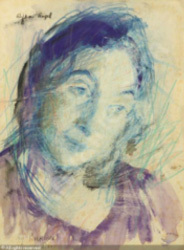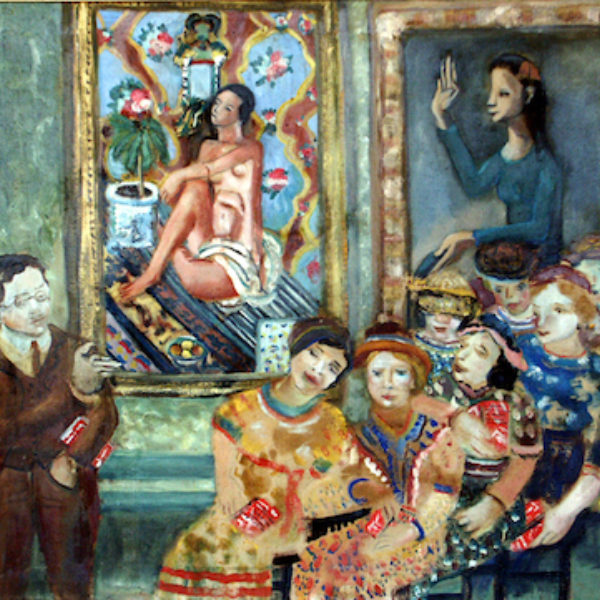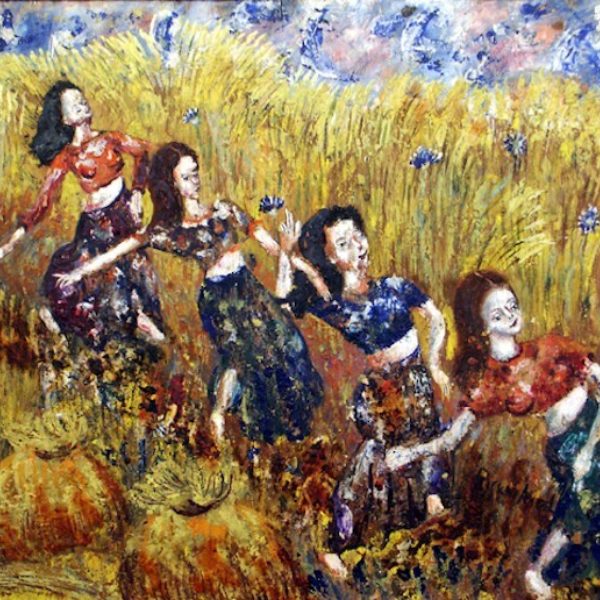
Rifka Angel
b. 1899, Kalvaria, Russia - d. 1988, New York, NY
Born in Russia, Rifka Angel came to the United States in 1914 to join her father, a recent immigrant. Although her formal training did not begin until the mid 1920s, Angel traced her interest in art to her father’s pursuit of sketching and textile design; she also recognized that, for her, art brought order to a chaotic world. When she was about 25, she met the artist George Brodsky (to whom she was briefly married). He introduced her to John Sloan, Emil Ganzo, Ernest Fiene, and Alfred Maurer. (Angel began her career as a model when she met this group of artists.) Ganzo encouraged her to try watercolor painting and when she showed some of her efforts to Sloan, he used his influence to have her work included in several exhibitions. She studied briefly at the Art Students League with Boardman Robinson, who urged her not to continue her formal education for fear it would interfere with her natural spontaneity.
She continued her studies at the Moscow Academy during a two-year visit with her sister in Russia that began in 1927. At that time, Matisse and Cezanne were her major influences. She then traveled to Paris before returning to the United States, absorbing more art in museums and galleries there.
After her short marriage to Brodsky ended, she married Milton Warren Douthat, a naval architect. By August 1928, they were settled in Chicago, where their daughter, Blossom Margaret, was born in 1930. Angel painted portraits (many of Blossom) and street scenes in her characteristic style of untutored spontaneity, and began to exhibit regularly, beginning with a one-person show at the Knoedler Gallery in 1930. (Aber states that Angel moved to Chicago in 1930, but the contemporary exhibition catalogue offers more reliable information for dating. It is further supported by C. J. Bulliet, who dates her arrival on the Chicago art scene to 1929.) This was followed by another one-person show in 1931, and participation in numerous group shows in Chicago, New York, and other locations. By 1935, she and her husband were faced with economic adversity and decided to move back to New York.
Angel’s work continued to develop, often influenced by her surroundings, which included time in Honolulu and Kansas City, followed by a divorce from Douthat after which she settled in Greenwich Village for most of the rest of her life. Despite serious health problems she continued to work and exhibit until she died in 1988.
Art Appreciation depicts the Picasso-Matisse Room (Gallery 48) at the 1933 Century of Progress exhibition held at the Art Institute of Chicago. Using brilliant color and spontaneous visible brushstrokes, Angel portrayed women museum-goers dressed in energetically decorative clothing listening to curator Daniel Catton Rich explain the work of Matisse, displayed behind them on the gallery wall. The overall patterning of the Matisse painting (Decorative Composition [Odalisque with the Straight Back], 1926) with its diagonally placed rug is repeated in the opposing diagonal of the group of women in their richly ornamented garments. The more staid Picasso painting, Woman with a Fan (1905), balances the dark-suited Rich. These two paintings hung next to one another in the gallery. Although Angel painted in a seemingly primitive manner, she was familiar with the masters of modernism, to whom she pays homage in Art Appreciation.
Susan Weininger
References
Aber, Ita. “Rifka Angel.” Woman’s Art Journal 7, no. 2 (Fall 1986/Winter 1987): 32–35.
Bulliet, C. J. “Artists of Chicago: Past and Present, No. 66: Rifka Angel.” Chicago Daily News, May 23, 1936.
Exhibition of Paintings by Rifka Angel. M. Knoedler, Chicago, March 29–April 12, 1930.
Frumess, Richard. Rifka Angel, 1899–1988: An Encaustic Pioneer. Exh. cat. Kingston, NY: R & F Handmade Paints, 2005.
Artist Image: Portrait of the artist Rifka Angel / David Davidovich Burliuk. Gene Shapiro, New York.

